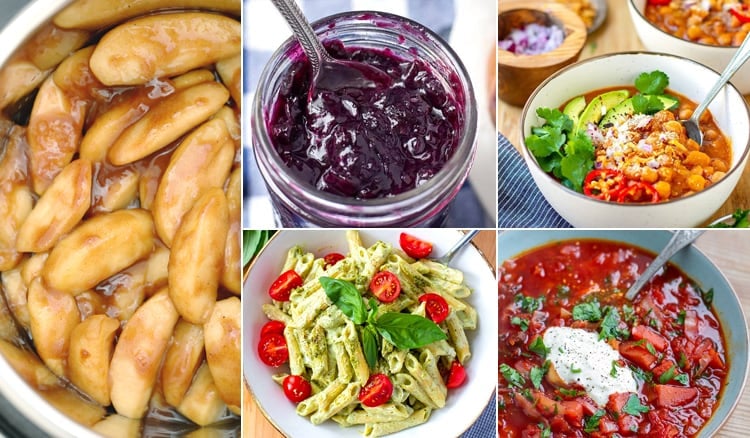
We have a series of posts featuring seasonal recipes with your Instant Pot for each month of the year. We're covering the most common seasonal ingredients in the northern hemisphere and how they can be used in pressure cooking. Of course, not all seasonal foods are fit for this cooking method, so we're choosing those that are great to prepare with your Instant Pot pressure cooker.
What's In Season In September
Apples
Apples are different in shape, size, color, texture, aroma, and flavor. When shopping for apples, look for firm, unblemished, or unbruised. There are more than 7,500 known varieties of apples in history and the world, 100 of which are grown commercially in the United States. Here are a few popular ones:
- Empire: A sweet-tart fruit known for its bright white flesh and creamy texture. Great for applesauce or pie.
- Fuji: Pinkish blush, a medium crunch, and a delicate sweetness. Popular for eating fresh and kids especially enjoy.
- Gala: Incredibly crisp and sweet, so they are best for eating fresh. It’s common to find these in the spring months because they store well.
- Honeycrisp: Its sweet-tart balance and “explosive” crunch. You can add them to salads, with a cheese plate, or in baked goods.
- Jonagold: It has yellow and red skin, be a very large apple. Its crisp, white flesh is a good balance between sweet and tart.
- Mutsu: Very large apple, the Mutsu is light green in color, with yellow to off-white flesh. Mildly sweet with hints of spice, giving it an almost savory taste. Reminiscent of jicama.
- Winesap: A deep red skin, aromatic, spiced flavor, and pronounced tartness makes it a great choice for pairing with other foods like cheese.
Apple harvest time is from August until November. The fruit keeps well in cold storage. Avoid storing them on the counter or at room temperature since they rapidly lose flavor and crispness. To avoid apples turning brown or oxidizing you can spritz lemon juice on them. You can preserve them by cooking them down into applesauce, apple jam, jelly, or butter. Apples are also good when dehydrated, fermented, or juiced into hard cider.
They say, “an apple a day keeps the doctor away,” for a reason. Many of the fruit’s nutrients are found in the peel. Apples are naturally rich in pectin, which makes you feel full and satiated with digestive benefits. They have 14 percent of the daily recommended amount of Vitamin C and may help with blood sugar regulation and lung support.
INSTANT POT Apple Recipes
-
Instant Pot Cinnamon Apples from Sweet And Savory Meals
-
Instant Pot Apple Crisp from Tastes Better From Scratch
- No Peel Instant Pot Apple Butter from A Bountiful Kitchen
Basil
There’s nothing like the smell of basil with mozzarella, tomato, and balsamic vinegar, much less the taste. It's the simplest way to enjoy this authentic herb. It is native to India and Southeast Asia, so it's delicious in warm curries too. Choose fresh basil leaves that are rich in color, lacking dark spots or wilting which are signs that it's not fresh. Basil can be enjoyed year-round pending on where they are grown and harvested, outdoors during the summer months, and indoors on your windowsill.
Basil doesn’t love cold. So try to store it upright in the water on your countertop. If you wrap in damp paper towels, place in the crisper drawer in your refrigerator. When you have too much basil growing in your garden, a great way to preserve and enjoy it any time of the year is to freeze into “ice cubes" or dry them out. Basil is a good source of Vitamins K and A to add to your dishes.
INSTANT POT Basil Recipes
- Instant Pot Easy Creamy Pesto Pasta
- Instant Pot Chickpeas With Salsa Verde
-
Lighter Instant Pot Thai Basil Chicken from Whole And Heavenly Oven
Pumpkin & WINTER SQUASH
When you see people drinking pumpkin lattes, you know the seasons are changing. Pumpkins vary tremendously in size in shape. But don't waste a huge pumpkin on your porch, make good use of it in your kitchen. They make great purées. Choose pumpkins that feel heavy for their weight, indicating denser flesh. Pass on pumpkins with black or mushy spots.
Most pumpkins can be stored for a long time in cool, dry conditions up to a month. Pumpkins are so versatile from sweet to savory dishes. Italian cuisine has tortellini and ravioli stuffed with pumpkin purée. They are great in vegetarian Thai curries or in a chili. Of course, we can't forget to mention a traditional pumpkin pie.
Pumpkins are loaded with Vitamin A. One cup of cooked pumpkin has 245 per cent of your daily needs. Pumpkin is also high in dietary fiber, Vitamin C and potassium. It even has decent amounts of iron, calcium and protein. Pumpkin seeds (aka pepitas) are super high in iron, manganese and a number of other key minerals; they also contain large amounts of Vitamin K and protein.
INSTANT POT Pumpkin Recipes
- Instant Pot Chili With Pumpkin & Chickpeas
- 20 Instant Pot Pumpkin & Squash Recipes
- Instant Pot Pumpkin Pie from Pressure Cooking Today
Rutabaga (SWEDES)
Rutabagas (also knows as Swedes) are one of those best-kept secrets of the Swedish that others need to discover. The name rotabagge translates roughly as “root bag.” They are sweet, versatile, and hardy. Rutabaga looks a lot like a turnip but is larger and has a pale, yellow flesh.
When picking rutabagas for their greens, choose those with fresh, vibrant leaves. The root should feel heavy for its size, be about the size of a softball or smaller, and should be free of nicks, cracks and holes. The ones sold in the market have a wax coating to extend their shelf life. So peel the root when prepping to cook. Rutabagas keep for a week at room temperature, two to three weeks in the refrigerator and months in the root cellar.
Rutabagas are an extremely versatile vegetable in sweet and savory meals and they can be eaten raw or cooked. They are sweet and juicy similar to jicama when eaten raw. To prepare rutabagas, trim off the greens, the top and bottom and peel with a paring knife. Rutabaga leaves can be blanched and frozen while the root turns a rich golden yellow when cooked.
Rutabagas are high in Vitamin A and beta-carotene. They are also an excellent source of potassium and manganese, and a good source of fiber, thiamin, Vitamin B-6, calcium, magnesium and phosphorus.
INSTANT POT Rutabaga Recipes
- How To Make Instant Pot Rutabaga Flour On My Face
-
Instant Pot Rutagaba Mash Recipes From A Pantry
Beets
Many people get their first taste of beets via canned or pickled. Fresh undercooked beets are tough, fibrous, and tasting earthy. Seek out beets that feel heavy for their size, with no mushy or black areas. If sold with their greens attached, the leaves should be sprightly (not wilted) with no yellow spots. Every single part of the beet is edible — roots, stems and leaves.
Beets play a huge part in Russian and Eastern European cuisine, the most famous dish is borscht (a beet-based soup). Beets are also used in baking, as both a food coloring and to add moistness. Beetroot can be eaten raw, roasted, boiled, steamed, sautéed and even made into chips.
They are can be paired with salty or creamy cheese (think feta, goat, ricotta), nuts and citrus. Beetroot can be stored loose in your fridge’s veggie drawer for at least two to three weeks, or longer. Beet greens are delicate and should be cooked within two or three days of purchase; cut greens from the roots and store in a plastic bag in the fridge. Beet leaves are excellent raw, boiled, steamed and sautéed. Add the leaves to any recipe calling for spinach or chard. Beet stems are also delicious and can be cooked the same way you’d cook chard stems or bok choy; either boil in salted water until tender or sauté.
Beetroot is high in fiber, folate, and manganese, and is a decent source of Vitamin C, potassium and magnesium. The greens, though, are really the nutritional powerhouse of the plant. They are super high in fiber, Vitamin A, Vitamin C, Vitamin K, riboflavin, calcium, iron, magnesium, copper, manganese.
Beets RECIPES IN INSTANT POT
- Delicious Instant Pot Borscht (Beet Soup)
- Instant Pot Beet Risotto With Goat’s Cheese
- Instant Pot Pressure Cooker Beets from Nom Nom Paleo
- Instant Pot Beets Salad (Paleo, Whole30, Vegan) from Yangs Nourishing Kitchen
bok choy
Bok choy is a popular mainstay of Chinese-American takeout. A fully grown bunch, with white stalks and dark green leaves, is 8 to 11 inches tall. It is tougher and stringier than baby bok choy. Miniature size bok choy has dark ruffled leaves or they can also have pale green leaves. When purchasing, stalks should be firm, leaves should be perky and free of blemishes. Avoid anything bruised. Brown or yellow spot are signs of age.
Bok choy is a cool-weather crop that can’t take the heat. Miniature sizes should be used within three days while the larger ones can be used in about five days. Storing in mesh bags or in damp kitchen towels in the refrigerator will preserve its life longer. The stalks of bok choy take longer to cook than the leaves. It's best to separate the bok choy and cook stalks first and then add the leaves.
Bok choy is a good source of Vitamin C, potassium, and calcium. It's great for people who can't eat meat or dairy since it has Vitamin A, which can boost the immune system and has vision-strengthening beta-carotene.
INSTANT POT RECIPES WITH BOK CHOY
- Tofu & Bok Choy With Ginger Garlic Sauce
- Pressure Cooker Baby Bok Choy from Dad Cooks Dinner
- Bok Choy Risotto from Letty's Kitchen
broccoli
As a kid, didn't you think broccoli looked like little trees? While they didn't seem apetizing after they were cook, they were still fun to play with. Most people toss the stems and only eat the pretty tree-like part. But don’t toss the stems. Roasting softens and sweetens the stems.
Florets of the broccoli should be tightly closed and deep green. Avoid limp or yellowing broccoli. Keep moisture to a minimum in the refrigerator by loosely wrapping them in a plastic bag or dish towel, and then use within a few days. You can preserve them by separating the stalks from florets and parboil for three minutes, then shock them in an ice-water bath. After drying you can store in freezer bags.
Broccoli is packed with disease-fighting antioxidants. One cup of cooked broccoli has five grams of fiber, nearly four grams of protein, plus Vitamins A and C, all at just 55 calories. It contains folate, iron, potassium, omega-3 fatty acids. It has a unique combination of phytonutrients doing anti-inflammatory, antioxidative and detoxifying work. It’s been studied for its potential in treating various degenerative conditions, skin damage, stomach ulcers, and adult blindness.
Broccoli RECIPES IN INSTANT POT
- Instant Pot Broccoli with Lemon & Garlic
- Instant Pot Quinoa with Broccoli and Cheese
- Instant Pot Broccoli Soup with Gremolata
Brussels sprouts
Brussels sprouts resemble baby cabbages and are so versatility in recipes with their soft, sweet and earthy taste. When purchasing, look for compact heads and bright green. Avoid any with pinholes, that can be a sign of pests. Brussels sprouts are sold on and off the stalk.
Brussels sprouts will last in the refrigerator for about two weeks when stored on the stalk and about half that if separated from it. To freeze sprouts, blanch by dipping briefly in a pot of boiling water, shock in cold water, pat dry and freeze for up to a year. They are great raw thinly sliced in a salad or roasted. Be careful not to overcook Brussels sprouts. Too long on the stove and the sprouts will release a sulfur smell.
Brussels sprouts are high in Vitamin C and Vitamin K, which is valued for its anti-inflammatory properties. They are a good source of folate, manganese, Vitamin B6, dietary fiber, choline, copper, Vitamin B1, potassium, phosphorus, and omega-3 fatty acids.
Brussels Sprouts RECIPES IN INSTANT POT
- Instant Pot Brussels Sprouts with Bacon & Garlic
- Instant Pot Bangin' Brussel Sprouts from Pressure Luck Cooking
- Instant Pot Creamy Brussel Sprouts from Diethood
Cabbage
Cabbage is a rich source of vitamin C and vitamin K amongst other nutrients. It's another vegetable high in fiber, which is why raw cabbage can sometimes cause a bit of flatulence. Nevertheless, it has many health benefits and research suggests that cruciferous vegetables, including cabbage, may have protective effects against cancer.
Cabbage is prepared and consumed in many ways from raw salads such as coleslaw to braised dishes such as cabbage rolls and cabbage soup. Pickling is one of the most popular ways of preserving the cabbage, creating dishes such as sauerkraut and kimchi. Cabbage is great for pressure cooking as it can withstand high temperatures quite well and for many dishes, it requires longer cooking times. Braised cabbage dishes, stews, and soups with cabbage are best suited to the Instant Pot, however, you can also use the Sauteé function to stir-fry thinly sliced cabbage in some butter and garlic for a simple side dish.
Cabbage RECIPES IN INSTANT POT
- Sri Lankan Coconut Cabbage
- Unstuffed Cabbage Bowls from Skinny Taste
- Borscht (Beet Soup)
cauliflower
Cauliflower is technically an edible flower. The head of cauliflower is known as the curd. Look for an even color and a tightly packed head. Cauliflower comes in purple, orange and green varieties, while white is the most common. Cauliflower will keep for a few weeks if kept dry and covered in the refrigerator. But if it is left uncovered it will start to wilt in a few days.
Roasting, boiling and braising are some of the ways to prepare cauliflower. It's gained popularity due to providing alternatives to certain dietary restrictions. It's a great option for vegan dishes or dairy-free dishes to make creamy soups. It's a perfect substitute for rice for those with gluten intolerance. Cauliflower freezes well if you break the head into individual florets. One cup of raw cauliflower provides 85 per cent of your daily recommended amount of Vitamin C. It is also high in folates, Vitamin K, and Vitamin B-6.
Cauliflower RECIPES IN INSTANT POT
- Instant Pot Whole Cauliflower
- Instant Pot Cauliflower Recipes
- Instant Pot Mashed Cauliflower from Champagne Tastes
Carrots
Carrots were grown in the Babylonian gardens in the 8th century, BCE for their leaves and seeds, both of which are highly aromatic, according to the Alan Davidson in the “Oxford Companion to Food”. It was only till later on that they were cultivated for their roots and they were yellow and purple-red. It wasn’t until the seventeenth century that the Dutch began growing an orange type.
Carrots today still vary in colors besides the commonly seen orange, you can find them in all shades of purple, red, white, yellow. They also vary in size, from tiny to giant. Smaller carrots tend to be sweeter and juicier. The carrot roots should be firm and free of mushy or black/brown spots. They can keep in the fridge for at least a month. Which is great for planning out several meals with them as a main or sidekick ingredient.
Roasting carrots play up their natural sweetness. They are also wonderful to puree into a soup with ginger and turmeric or juiced with an apple for breakfast. Carrots can also be used for sweet recipes like the classic carrot cake. They can be preserved in different ways such as pickled, canned and frozen. One cup of carrots provides over 400 per cent of your daily Vitamin A needs to help with vision, immune function, and reproduction. They are also good sources of potassium, vitamin K and vitamin E, and a great source of fibre.
Carrot RECIPES IN INSTANT POT
celery
Celery is such an essential base ingredient in for so many soups, stews, and sauces. When eating raw it's tall, light green crisp stalks are perfect for dipping in sauces or with peanut butter. Celery seeds are also harvested and used as seasoning such as part of pickling spices. When purchasing look for unblemished, firm celery and keep it refrigerated until use. If celery becomes limp, trim its base and place it in a glass of water in the refrigerator until it is crisp again.
Celery has numerous health benefits. The stalks are a good source of antioxidants, B-vitamins, and phytochemicals while Vitamin A can be found in its leaves. It is a popular ingredient for juicing raw since it has so many vitamins and minerals.
INSTANT POT CELERY RECIPES
- Instant Pot Risotto With Celery & Peas
- Cream of Celery Soup from Oatmeal With A Fork
- Persian Beef and Celery Stew (Khoreshe Karafs) from Big Flavors Tiny Kitchen
Corn
There is a lot of corn and several major types, including sweet corn (vegetable we eat), dent or “field” corn (animal feed and other industrial applications like ethanol), flour corn (used for cornmeal), and flint corn (known as Indian corn, often beautifully multicolored).
Sweet corn is available only in the summer and early fall. Because sweet corn is at its best when really, really fresh, try to seek out local corn from farmers markets or farm stands. The kernels do become starchier and less sweet the longer the ears are stored. Look for ears that are firm, plump and fairly unblemished. Contrary to popular belief, you do not have to strip the ears of their green husk before purchasing them (and in fact, this drives farmers crazy). Just gently squeeze down the length of the ear to feel for bald spots.
Corn is amazingly versatile. The ears can be grilled, boiled, steamed or roasted; the kernels can be creamed, made into pancakes, turned into relish, added to salsa and even churned into ice cream. You can even eat fresh kernels raw right off the cob. Cornmeal is used to make tortillas, tamales, cornbread, corn dumplings, and corn pudding, among many, many other dishes from around the world. Hominy is made from corn kernels soaked in lime and is available dried or canned. Corn freezes well. Blanch the corn (easiest to do still on the cob) for 3-4 minutes in boiling water, and then quickly cool in an ice bath (ice plus water). Pat dry. Cut the kernels off the cob, place in freezer bags and freeze.
Fresh corn is a good source of Vitamin B6, thiamin, niacin, magnesium, iron and a number of other important minerals. Corn is also low in fat and high in dietary fiber and protein. Eating corn with beans provides all of the amino acids that humans need, as corn is high in methionine but lacking in lysine, while beans are high in lysine but lacking in methionine.
Corn RECIPES IN INSTANT POT
- Instant Pot Corn Sweet Potato & Chipotle Soup
- Instant Pot Corn On The Cob (With Cajun Butter & Lime)
- Chicken & Corn Soup With Spinach
- Instant Pot Yellow Rice With Peas & Corn
- Corn Quinoa & Bacon Salad
- Pressure Cooker Creamed Corn from Kitchen Cat
Eggplant
Eggplant (or aubergine in the UK) is a deep purple meaty fruit ideal for grilling and roasting. Grown all over the world dictating a variety of shapes and sizes. Look for glossy, unblemished skin and very firm texture when (gently) squeezed when purchasing. Larger eggplant tends to be more bitter than smaller-sized ones. They don’t keep well in the refrigerator for longer than 2 to 4 days.
Usually, longer storage equals bitterness. So if you plan to cook your eggplant right away, leave it out on the counter. Eggplant oxidizes (turns brown when exposed to air) fairly quickly, so cut it right before you plan to cook it.
Salting eggplant keeps the fruit from soaking up too much oil in the cooking process. Eggplant can be blanched and frozen for recipes like baba ganoush where the eggplant is pureed and mushy. Other delicious methods of cooking included fried, stewed, and stuffed. It pairs well with garlic and onions, basil, oregano and parsley.
It is a decent source for manganese, thiamin, Vitamin B6, Vitamin K, fairly high in fiber and low in calories. The skin of the eggplant is the healthiest part as it has potent antioxidant properties, some of which may even help with the control of type 2 diabetes and hypertension.
Eggplant RECIPES IN INSTANT POT
- Healthy Instant Pot Eggplant Parmesan from Eat The Gains
- Instant Pot Baingan Bharta Recipe - Spiced Mashed Eggplant from Vegan Rica
- Spicy Eggplant Stew from Viva La Food
Green beans
Green beans are the unripe, young fruit and protective pods of various cultivars of the common bean. Green beans are known by many common names, including French beans, string beans, snap beans, and snaps. Over 130 varieties of green beans are known.
Bush beans are short plants, growing to not more than 2 feet (61 cm) in height, often without requiring supports. They generally reach maturity and produce all of their fruit in a relatively short period of time, then cease to produce. Pole beans have a climbing habit and produce a twisting vine, which must be supported by "poles" or trellises. Green bean pods contained a "string", a hard fibrous strand running the length of one side of the pod. This string was either removed before cooking.
Green beans are eaten around the world, and are sold fresh, canned, and frozen. They can be eaten raw or steamed, boiled, stir-fried, or baked. They are commonly cooked in other dishes such as soups, stews, and casseroles. A popular dish is green bean casserole.
Nutritionally, green beans are a healthy vegetable as a good source of fibre, potassium, and folate, and are an excellent source of protein, iron, and zinc. They contain antioxidants similar to those found in green tea, also known as catechins, which can improve heart health and help prevent cancer and manage/prevent diabetes.
Green Bean RECIPES IN INSTANT POT
- Instant Pot Green Beans With Butter & Cracked Pepper
- Instant Pot Green Bean Casserole
- Instant Pot Potato Salad With Tangy Vinaigrette (Vegan, Gluten-Free)
- Instant Pot Vegetables En Papillote
Greens: Collards, mustard, turnip
It's no news that leafy greens are good for you. Naturally gluten-free, all leafy greens are low in calories and carbohydrates yet can be quite satiating when consumed with a little added fat, which helps with vitamin absorption.
Collard greens contain substantial amounts of vitamin K and are rich in vitamin A, vitamin C, and manganese, and moderate sources of calcium and vitamin B6. Leafy greens are also high in iron and provide dietary fiber. Being low in calories and sugar, leafy greens are great for weight loss and healthy eating.
Depending on the hardiness of the leaves, greens can be cooked in a variety of ways. Spinach and other thin-leaf green veggies are great raw, while tougher kale and collards are best cooked. Instant Pot is great for cooking collard greens and kale as a side dish and you can add leafy greens to any stew, soup, curry, pasta or risotto you make in the pressure cooker.
Collard Green RECIPES IN INSTANT POT
- Collard Greens With Sun-Dried Tomatoes
- Zuppa Toscana (Tuscan Soup)
- Quick & Easy Italian Farmhouse Vegetable Soup
- Indian Spinach Rice (this can be made with any leafy greens)
Leeks
Common leeks kind of look like a giant scallion. Leeks were probably first cultivated by the Egyptians, who liked leeks so much they painted their tombs with images of them. They have a straight, white stem that gradually becomes lighter green, making way to the dark, almost blue-green of the top leaves. Seek out leeks on the smaller side, one to two inches in stem diameter, three inches tops. Larger leeks tend to get woody and a bit tough. Leek greens should be very dark green with no yellowing or wilted spots. The white stem should be very white and firm with no black, mushy or discolored areas.
Leeks have a mild onion, sweet flavor. Most recipes call for only the “white and light green parts” of the vegetable, but the dark green leaves can be saved to use in stock making (veggie, beef, chicken, etc.). Leek stems can be braised, grilled, roasted, fried, steamed, sautéed and used raw in salads. They also pair well with dairy products. Leeks will keep in your veggie drawer, wrapped in a paper towel, for at least a week. Don’t wash leeks before you refrigerate them, as this accelerates their decline.
The thing about preparing leeks is that they are really dirty, with gritty bits of sand frequently hidden in the layers that make up the stems. They have to be cleaned very thoroughly (good description of how to clean leeks, or here is a great video that shows two different techniques for cleaning the veggie). Leeks are very high in Vitamins A and K and are good sources of Vitamin B-6, folate, iron, calcium and manganese. They are also high in fiber and low in calories. Leeks are toxic to dogs and cats, so keep them (and their Allium relatives) away from your furry friends.
Leek RECIPES IN INSTANT POT
- Instant Pot Scalloped Potatoes & Leeks
- Leek, Kale & Potato Soup
- Instant Pot Brothy Farro with Sausage and Leeks from Epicurious
Mushrooms
Edible mushrooms vary in size, shape and color. There are so many types around the world and so versatile in use for recipes. From the most common being the white button kind on a pizza to the large portabello kind that can be a vegetarian alternative to a burger. Look for fresh mushrooms without slimy, moldy or black spots. Fresh mushrooms don’t store well. They can last three to four days.
While different mushroom varieties have slightly different nutritional compositions, most are quite high in riboflavin (Vitamin B2), niacin (Vitamin B3) pantothenic acid (Vitamin B5), and also contain some minerals, like copper, selenium, phosphorous and potassium. They even have a bit of protein and iron. Mushrooms have been used medicinally by cultures all over the world. Shiitakes may be beneficial to the immune system and help lower cholesterol; button mushrooms have potent antioxidant properties; some hallucinogenic mushroom compounds may help alleviate depression.
Mushroom RECIPES IN INSTANT POT
- Creamy Mushroom Soup
- Chicken Mushroom Stew
- Mushroom Matar (Curry)
- Pork Chops with Creamy Mushroom Sauce
- Miso Quinoa with Mushrooms and Peppers
Okra
Raw okra is 90% water, 2% protein, 7% carbohydrates, and negligible in fat, making it a healthy, low-calorie food. It's rich in dietary fiber (great for gut health), vitamin C, and vitamin K, with moderate contents of thiamin, folate, and magnesium.
Okra pods are cooked, pickled, eaten raw, or included in salads. You might have noticed that a certain amount of cooking will produce okra "goo" or slime which a mucilaginous product of the plant and nothing to worry about. Soaking okra in water before cooking is believed to reduce the amount of slime produced.
Okra pods can be grilled, steamed, roasted, stir-fried, and stews or braised. Instant Pot is great for making okra curries, stews and soups. Learn more about okra here.
Okra RECIPES IN INSTANT POT
- Bamyeh Okra Tomato Stew from Two Sleevers
- Lentil and Okra Curry from Once A Month Meals
- Stuffed Okra from Corrie Cooks
- Okra and Rice Chicken Soup from A Pleasant Little Kitchen
BELL Peppers
How hot do you like your food? In 1912, Wilbur Scoville developed what would become the Scoville scale, a measure of chile pepper “hotness.” The scale basically measures the amount of capsaicin, a chemical compound found in peppers that stimulates nerve endings, especially in the mucous membranes. The chili pepper is probably indigenous to western South America and eventually made its way to Mexico. Columbus was likely responsible for bringing the pepper to Europe. The Spanish and the Portuguese then spread the fruit to areas like India and Southeast Asia in the early 16th century.
Peppers come in a very wide range of shapes, colors, sizes and heat intensity. The mildest, sweetest peppers are the fruit of the bell pepper plant, which is found in a rainbow of colors, ranging from green to red to purple-black. Chile peppers can be tiny, like the diminutive (and colorfully named) mouse-dropping chile from Southeast Asia to the relatively large Cayenne pepper, and also come in many colors, ranging from peach to bright red.
All peppers should have very glossy, firm skin with no brown or mushy spots on the surface of the fruit. Dried whole peppers, used frequently in Mexican cooking, should also have glossy skin and should be free of brown or moldy-looking spots.
You can store them in the refrigerator for up to a week. Make sure the pepper’s skin is totally dry before storing — moisture causes rapid deterioration. Many commercially grown peppers are coated in wax; this extends the storage life of the pepper (sometimes up to three weeks). You can also freeze them.
Peppers can be used raw in salads and as toppings for various dishes. They are equally lovely roasted, stewed, pureed, stuffed, and grilled. Peppers also pair well with their tomato, potato, and eggplant cousins. Dried chiles, important in Mexican cuisine, have a depth of flavor very different from their fresh versions.
To diminish the intensity of chiles’ fiery burn in your dish, remove the ribs (aka the “placenta”) and the seeds of the pepper with a very sharp knife before cooking or eating raw. Wear gloves when working with hot peppers to avoid skin burns from the oils found in chiles. Be sure to wash cutting boards and knives that have come into contact with hot peppers with warm, soapy water to avoid a capsaicin-derived kitchen disaster.
The capsaicin in hot peppers is actually made up of a number of different chemical components, each with its own special way to burn. Some swear that consuming dairy (like a glass of milk) can diminish a chile’s burn; others recommend a spoonful of sugar or something sweet. Rice and ice water are still other common remedies. Whatever you do, do not down a carbonated beverage to relieve the pain — the bubbles enhance the burning.
In general, peppers are very high in Vitamins C and A and are good sources of folate, Vitamin B6, Vitamin E, and fiber. Sweet peppers are far more nutritious when ripe when allowed to turn from green to red, yellow or orange.
Colorful peppers are also high in lycopene, a powerful antioxidant that may help diminish the risk of certain cancers. The chemical compound capsaicin seems to increase the body’s metabolism, helping us store less fat and burn more energy. There is some speculation that chiles cause a mild euphoria due to the endorphins released from the pain of the chile’s burn, which may be why chile-eaters come back for more.
Pepper RECIPES IN INSTANT POT
Peas
Peas are a type of legume native to the Middle East, specifically to the area around what is now Turkey and Iraq. From the Middle East, the legume spread rapidly to Europe. The pea was an important source of food for peasants in the Middle Ages, providing protein and other nutrients in lean times.
Snow peas and sugar snaps are often used in stir-fries, pairing with garlic, sesame oil, and soy sauce. Sugar snaps are also pretty excellent raw. Pea shoots and tendrils can be eaten like a green braised in a little bit of liquid, or sautéed, or tossed, raw, into salads. Dried peas (split peas) tend to break down quite a bit when cooked so they are great for Split pea soup using a chunk of a ham hock with the peas while the soup cooks.
When shopping for garden peas, look for pods that are plump and bright green, with no wilted or brown spots. All parts of the pea plant are edible from the shoots, tendrils, and leaves, flowers, pods and, of course, the seeds (the peas themselves). Fresh peas in the pod will keep for at least a week in the produce drawer of your refrigerator. They will get starchier and less sweet the longer you wait to cook them. Even after a longer period of time, when the pods look a little gnarly, the peas inside are usually okay.
Every variety of pea is really good for you. Garden peas are higher in calories than most other veggies and are rich in fibre and protein. They also have huge amounts of Vitamins C, A, K and folate, and are high in manganese, iron, zinc, and magnesium. They even contain a little bit of calcium. Dried peas (aka split peas) have even more protein and fibre than fresh peas and contain more folate and potassium than fresh. Snow peas and sugar snaps have a large amount of Vitamin C — just one cup provides you with 128 percent of your daily Vitamin C needs. They’re also super high in Vitamins A and K and are good sources of iron and Vitamin B6.
Peas were key to the creation of the modern science of genetics: Gregor Mendel, an Austro-Hungarian monk, conducted the very first experiments on the inheritance of traits in pea plants, which lead to the formation his theory of inheritance, which basically forms the basis of all of genetics.
Pea RECIPES IN INSTANT POT
- Instant Pot Curry With Mushroom & Peas (Matar Mushroom)
- Instant Pot Yellow Rice With Peas & Corn
- Instant Pot Risotto With Pea & Celery (Quick & Easy)
- Creamy Instant Pot Chicken & Noodles
- Lemony English Peas and Asparagus from Recipes Instant Pot Official
Potatoes
Is there anything better than hot french fries straight from the fryer and handed to you in a red cardboard container? Maybe not the healthiest choice, but definitely a guilty pleasure. Potatoes originated in the highlands of Peru. Then the Spanish were the first Europeans to encounter them in the 16th century in Columbia, and later the British Isles and possibly to India. By the 17th century, potatoes were critical in the Irish diet. But in the 1840s, potato blight struck Ireland, and a devastating famine was triggered which killed about a million Irish, and a million more emigrated to the US and other countries.
Potatoes are generally classified by color, texture and sometimes by shape. Some examples: russets (aka “baking” potatoes) tend to have a “dry” texture, red potatoes tend to be waxy or creamy, white potatoes tend to be creamy, yukons (aka yellow potatoes) tend to be a bit waxy and rich, purple potatoes tend to have a “dry” or “floury” texture, and fingerlings are finger-shaped or oval. Store potatoes in a cool, dark place with low humidity (a basement is ideal). Kept dry and in a dark place, most potatoes will keep for at least a month and up to three months or you can freeze cooked potatoes.
Potatoes are really one of the most versatile vegetables in the kitchen. They can be baked, steamed, fried, pureed, mashed, stuffed, roasted, grilled and boiled. Fried potato dishes include the ubiquitous French fry, but also the classic American hash browns, Spanish patatas bravas, Swiss rösti (hash browns with an umlaut) and tater tots. Italians make potato gnocchi, Indians stuff potatoes into samosas and paratha, the French make potato gratins and pommes dauphine.
The Irish mix cabbage into them or make potato pancakes. Germans make potato salad with bacon, onion, and vinegar; classic American potato salad has mayo and boiled eggs. Potato flour or mashed potatoes are also used in bread baking, donut making, and pastry dough, too.
Potatoes are actually pretty good for you. They are high in lots of vital nutrients, including Vitamin C, Vitamin B6, potassium, manganese and folate. Potatoes also have a fair amount of fiber, and even have good amounts of protein and iron.
Potato RECIPES IN INSTANT POT
Sweet Potatoes
Most sweet potatoes are large and football-shaped, with a fat middle and tapering end. But they also come in a rainbow of colors, shapes, and sizes including orange, yellow, creamy white or even purple-magenta. After sweet potatoes are harvested, it can take up to eight weeks of curing and storage after harvest before sweet potatoes sweeten and develop the texture most are accustomed to.
Sweet potatoes can be stored for several weeks in a cool, dry and away from light. Don’t store them in the refrigerator, as this accelerates their decline — they don’t like to be too cold or too moist. Sweet potatoes that get too warm tend to sprout and become shriveled and mushy. Sweet potatoes are great because they can play any role in a meal from side dish to the main course to dessert. Since they can be baked, roasted, boiled, fried, grilled, mashed or pureed.
Sweet potatoes are good for you, especially varieties with orange or purple flesh. They contain truly awesome amounts of Vitamin A — between 500 per cent and 700 per cent of your recommended daily intake in just one cup. (Vitamin A is a vitamin necessary for eye, immune system and skin health, and is also a powerful antioxidant.) Sweet potatoes also contain fiber, excellent amounts of Vitamins C and B-6, manganese, potassium, and several other vitamins and minerals. They are even good sources of iron and calcium. Sweet potatoes are also thought to be helpful in blood sugar regulation and have been used as a natural treatment against intestinal parasites because of Vitamin A (beta-carotene).
Sweet Potato RECIPES IN INSTANT POT
- Instant Pot Chicken & Sweet Potatoes
- Instant Pot Sweet Potato Tortilla Soup
- 20 Scrumptious Instant Pot Sweet Potatoes Recipes
Zucchini & Other Squashes
Zucchini is mild which means, it goes nicely with garlic, tomatoes, leafy herbs, olives, roasted peppers, onions, and various cheeses. Zucchini can be sautéed, batter-fried, stuffed, grated, grilled, pureed, and roasted. Zucchini can go into sweet dishes, too for an added healthy appeal. Avoid the dull and bruised zucchini when purchasing.
The zucchini is part of the extensive Cucurbitaceae family, which includes cucumber, watermelon and winter squash. Before Christopher Columbus brought squash seeds to Europe. Once in Europe, the Italians coined the big-boned relatives as Zucca and its more petite kin as zucchini. Not until the 1920s did Italian immigrants bring back zucchini to America. One cup of raw zucchini is just 18 calories. A rich source of Vitamins B-2, B-6, and C, potassium (great for blood pressure), zucchini also offers decent amounts of fiber and even a little bit of protein.
Keep zucchini refrigerated until ready to use; wrap in paper instead of plastic, which creates moisture. Zucchini should be used within two or three days of purchase. Otherwise, zucchini gets mushy and moldy. Zucchini goes bad quickly. To keep it around a little longer (about three months), cut it into ½-inch pieces, blanch, and freeze. You can also slice it into thin rounds and dehydrate zucchini, or pickle it.
Zucchini RECIPES IN INSTANT POT
- 10-Minute Zucchini Noodles With Garlic, Lemon & Parmesan
- Best Instant Pot Zucchini Recipes
- Instant Pot Zuppa Toscana (Tuscan Soup)
- Instant Pot Broccoli Cheddar and Zucchini Soup from Half Baked Harvest
- Instant Pot Red Lentil Zucchini Dal from Carve Your Craving
- Instant Pot Zucchini Linguine
Tomatoes
Tomatoes come in a wide variety of shapes and colors, including purple, yellow, orange, and red. There are striped varieties of the fruit, as well as tomatoes that stay green even when ripe. For all tomato types, look for fruit that is unblemished and free from bruised or soft spots. The fruit should be firm to the touch when gently squeezed. Keep your tomatoes on the counter instead of the refrigerator, with the exception of small cherry tomatoes. Tomatoes continue to ripen after being picked, so keep this in mind when selecting tomatoes at the market. If you are not going to use them for a couple of days, choose fruit that is on the firmer side and allow to ripen on the counter.
Tomatoes are extremely versatile in the kitchen and shine in many dishes, from sauces to salads to condiments. They are equally tasty raw and cooked and can be stuffed, sautéed, roasted, dried, pickled or fried. Other classic culinary combinations include pairing tomatoes with onions, garlic, basil, oregano, and parsley. Tomato paste is a kitchen staple used in sauces, stews and other dishes. You can make a sauce, paste or a jam, then use a water bath canner to seal jars or freeze.
Tomatoes are low in calories, high in fiber and high in both Vitamins C and A. They are also good sources of Vitamin K, potassium and manganese. The fruit is also very high in lycopene, an antioxidant that has preliminarily been linked to cancer prevention, especially prostate cancer. Tomatoes are also rich in flavonoids, antioxidants with anti-inflammatory and anti-bacterial properties.
Tomato RECIPES IN INSTANT POT
- Instant Pot Tomato Barley Risotto With Marinated Feta
- Instant Pot Quinoa With Garlic Mushrooms & Cherry Tomatoes
- Instant Pot Mexican Bean Salad
- Instant Pot Spaghetti Sauce (with Fresh Tomatoes) from Detoxinista
- Instant Pot Steamed Tomatoes from Recipe this
- Easy Tomato Soup from A Saucy Kitchen
Melons
There are so many different types of melons. Melon needs lots of sun. They show up from mid to late summer, when nights are still mild. It thrives only in the presence of heat and relatively dry conditions. Once the autumn rains come, the melon season ends. When shopping, look for a melon that is free of nicks or cuts in the rind and mold on the blossom end. No soft spots. When you tap it, it should sound like a drum and should feel heavy in your hand. A melon that is perfectly ripe or on its way should smell like flowers and honey.
Melons are highly perishable. Keep whole melons out of the refrigerator, especially if it needs to ripen more. But wash the exterior under running water just before eating. Then store leftover cut melon in the refrigerator in an airtight container without the rind.
Most people are accustomed to eating melons raw and kept for a sweet snack or light dessert or healthy breakfast. They work great in savory dishes or pickled well. One cup of muskmelon provides the daily recommended amounts for Vitamins A and C, a decent source of potassium, folate and fiber, all for about 54 calories. It also contains small amounts of heart-healthy Omega-3 fatty acids.
INSTANT POT Melon RECIPES
- Pressure Cooker Winter Melon Pork Ribs Soup from What To Cook Today
- How to Make Instant Pot Watermelon Rind Pickles from My Recipes
Peaches & Other Stone Fruit
Peach
From China, the peach travelled to Persia and then Greece, and into the rest of Europe, thanks to peach lover Alexander the Great. By the mid-1700s, Native Americans were planting peaches in the new colony of Georgia.
Peach flesh will be either yellow or white. Generally speaking, the white peach tends to be sweeter, while the yellow offers a slight tang and acidity. Whether or not you can pull a peach apart depends on whether it’s a freestone or a clingstone, the latter used for commercial canning. When shopping, give your peach a smell.
If you don’t catch a whiff of that signature perfume, a ready-to-eat peach should be fragrant. A good peach will also be tender and have some “give.” If a peach is rock hard, it’s probably been picked too early and best left alone. Because the peach is so fragile and perishable, it is critical to select fruit that truly is free of blemishes and bruises. Keep in mind that the peach not only bruises easily but can mold even if rubbing up against each other.
Peaches go great in summer salads; try arugula for a twist to a dinner salad. Also works well when grilled, especially if it’s a little on the firm side. This adds some smoky notes and carnalizes the natural sugars in the fruit. Try pairing grilled peaches with goat cheese or drizzled with honey.
Peach RECIPES IN INSTANT POT
- How to Make Peach Jam in the Instant Pot Maria Moore Nutrition
- Real Food Instant Pot Peach Crumble from Real Food Instant Pot Peach Crumble
Berries
Wild blueberries were first harvested commercially in the 1840s. In New Jersey in 1911, botanist Frederick Colville, with Elizabeth Coleman White, started experimenting with wild varieties of blueberries in order to create strains more suitable for cultivation. The commercial blueberry growing industry soon expanded to multiple US states and around the world.
Look for firm, dry, plump blueberries with smooth skin and no shrivelled or moldy bits. Some blueberries may have a faint white powdery coating (called “bloom”) that is naturally occurring and helps to protect the berries. If you plan to use your blueberries within a day, store them right on the counter. Otherwise, stick them, unwashed, in the fridge in the container they came in. They will keep for up to a week. Discard damaged berries because they bring moisture and mold that can quickly ruin an entire container of the fruit.
Blueberry sauces pair deliciously well with savory dishes such as pork, duck. Toss a handful of berries into a green salad. Blueberries naturally work perfectly with sweet treats such as muffins, pies, cobblers, pancakes and crisps, blueberry sauce, jams, smoothies, and cookies. The easiest way to enjoy blueberries year-round is to freeze them.
Blueberries are one of the world’s healthiest fruits. Not only are they a good source of Vitamin K, Vitamin C, and manganese; they are also high in fiber and relatively low in calories. They are naturally rich in polyphenols, antioxidant chemicals that are increasingly linked to big-time health benefits, including in cardiovascular health, brain functioning (including memory), and even cancer prevention.
Berry RECIPES IN INSTANT POT
- Instant Pot Blueberry Jam from Simply Happy Foodie
- Instant Pot Blueberry Cheesecake from Crystal and Co.
- Instant Pot Low-Carb Berry Cheesecake from Ditch the Carbs


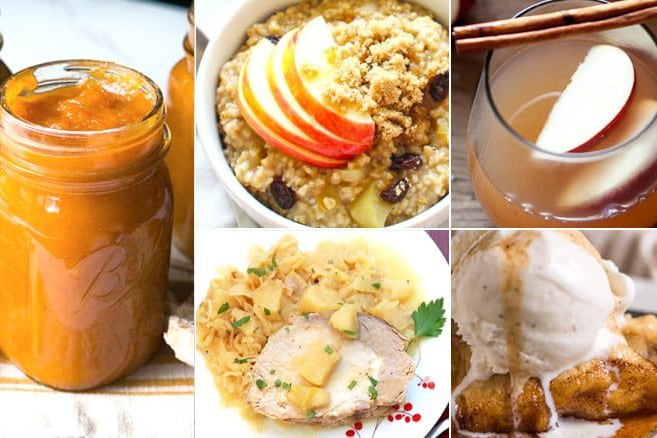
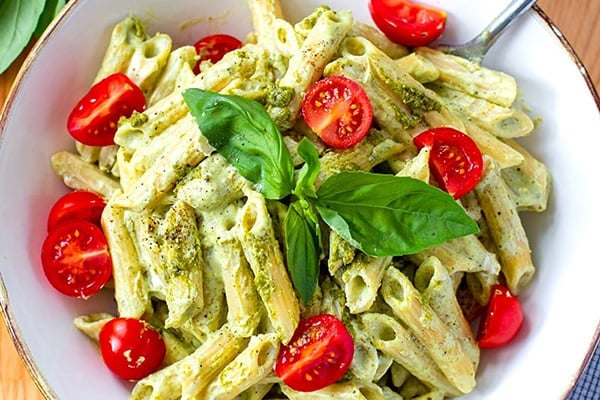

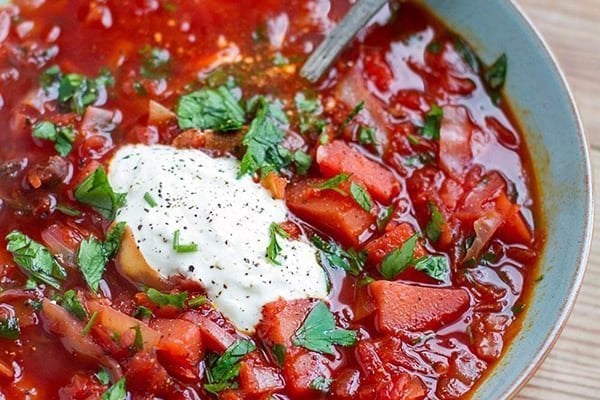
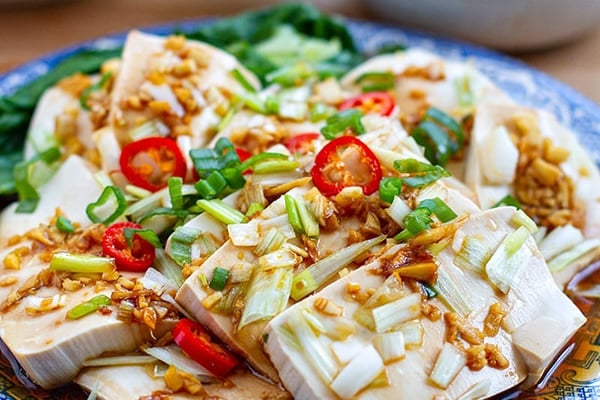
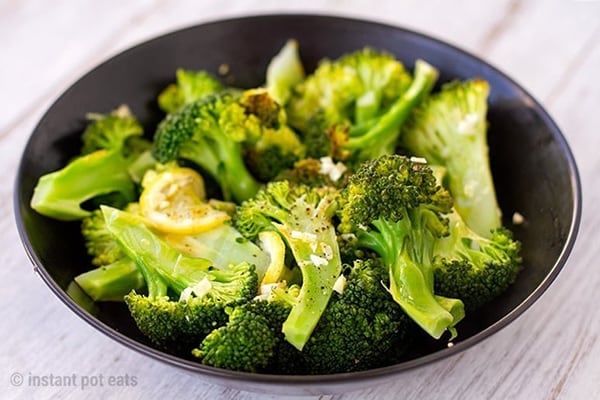
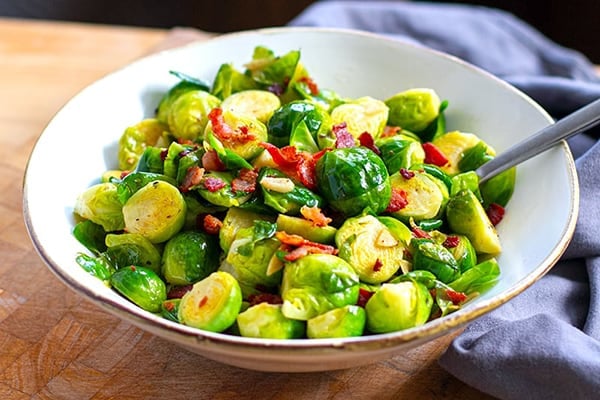
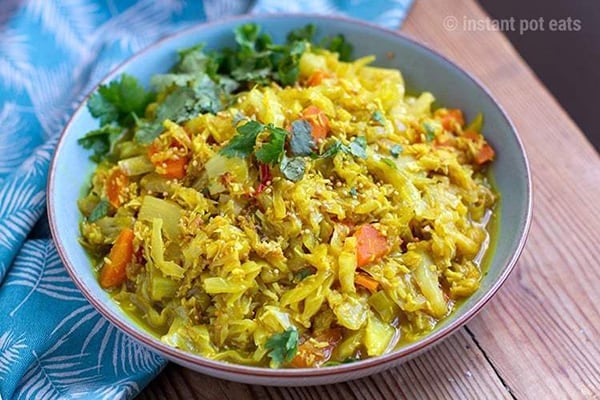
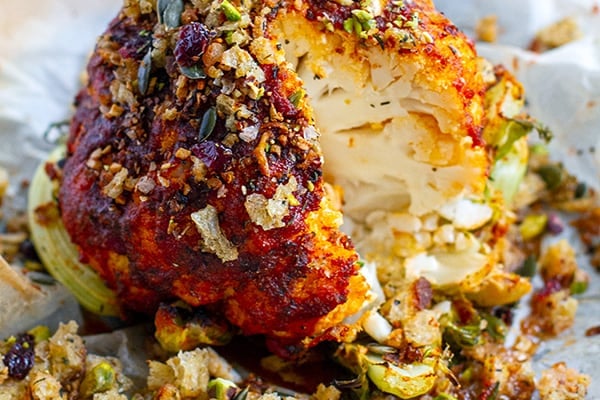
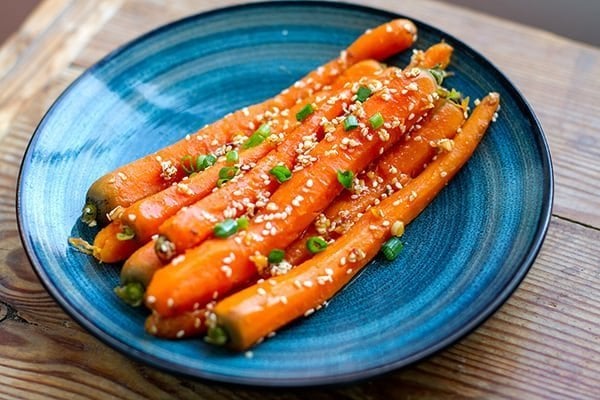
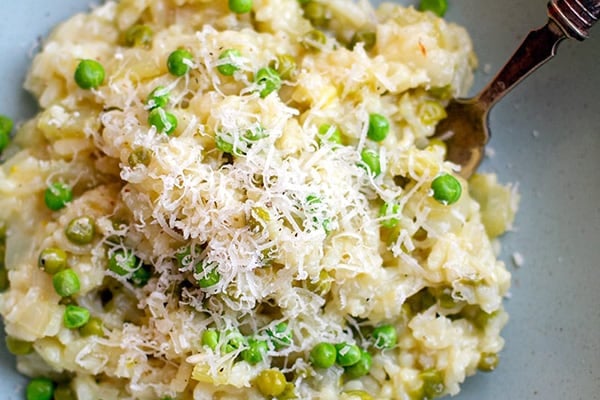

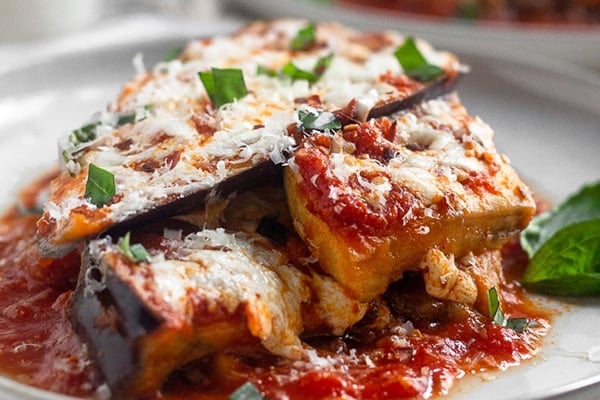
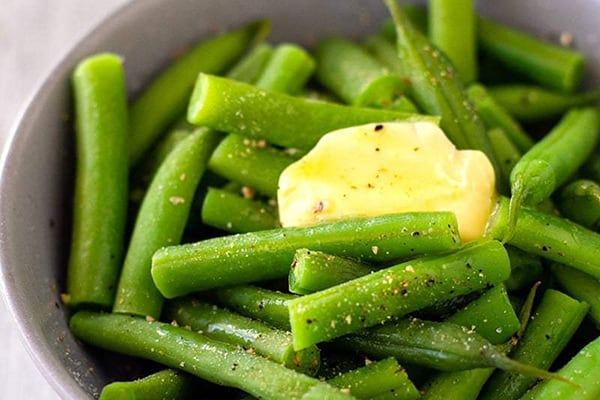
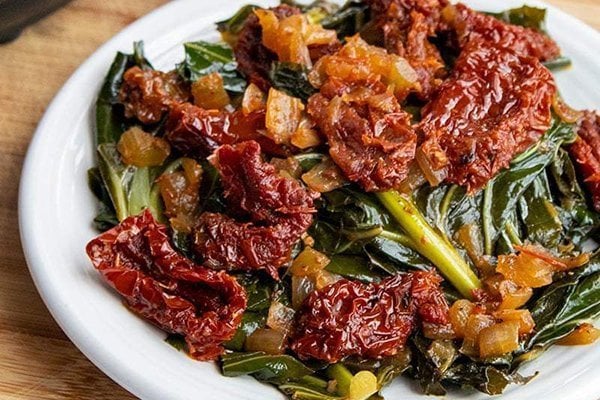
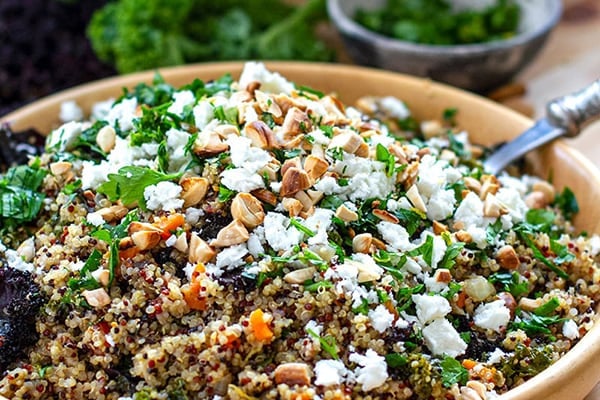

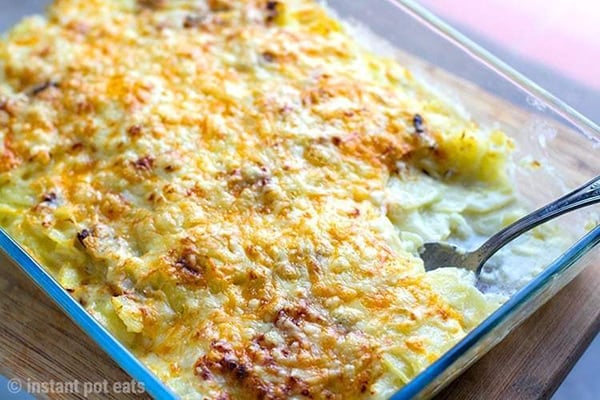
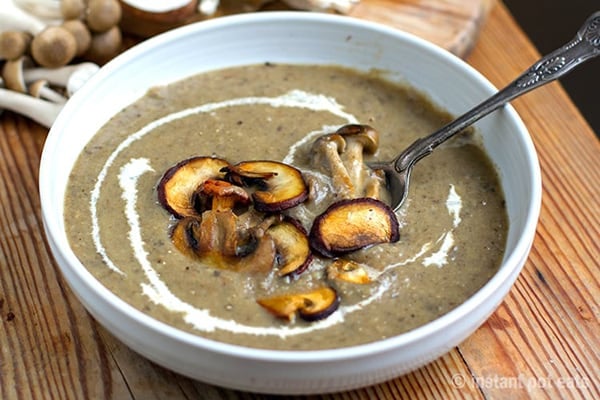
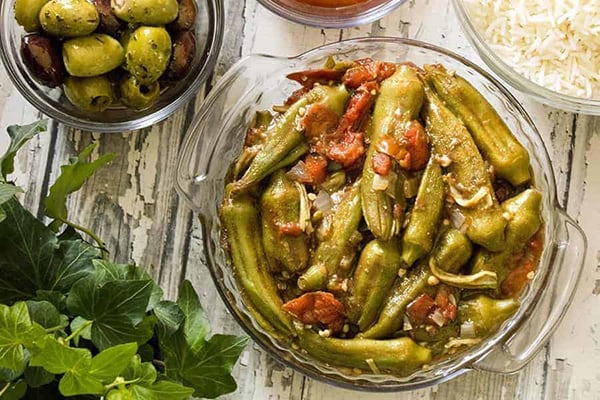

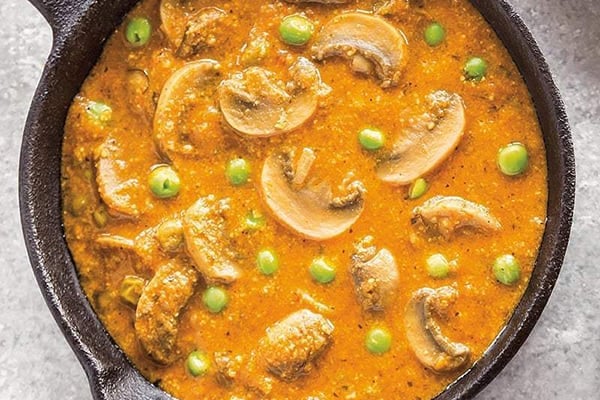
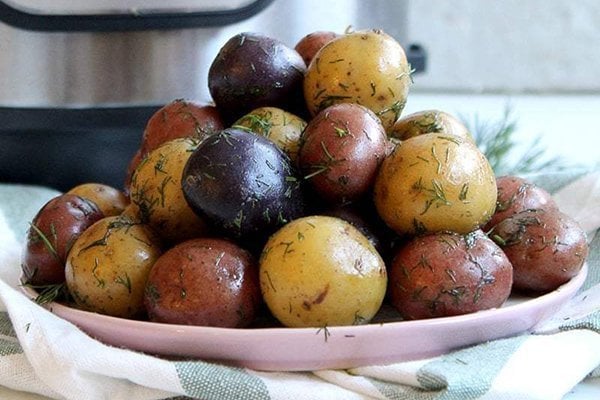
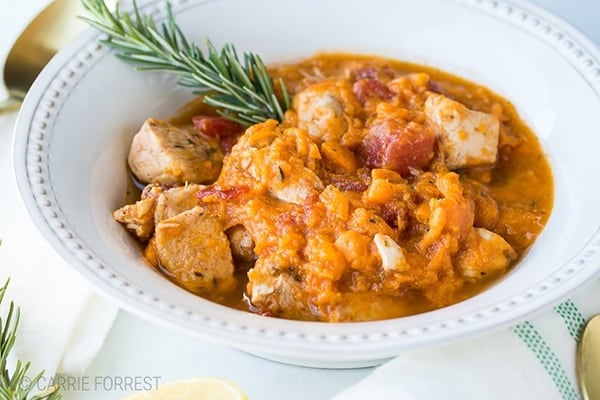
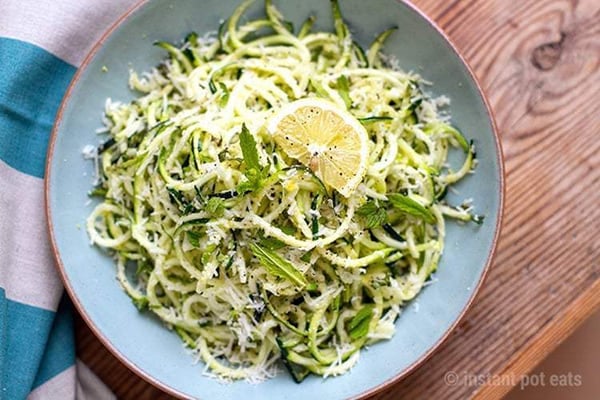
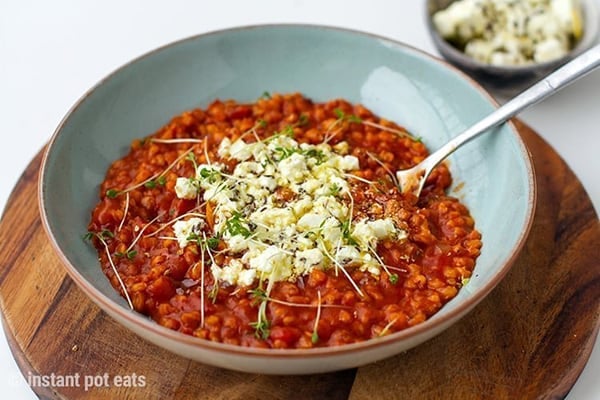
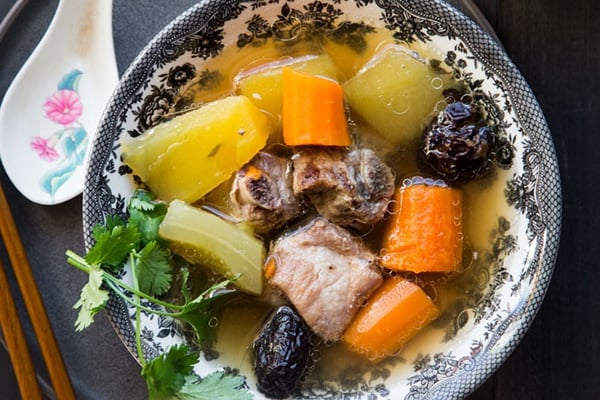

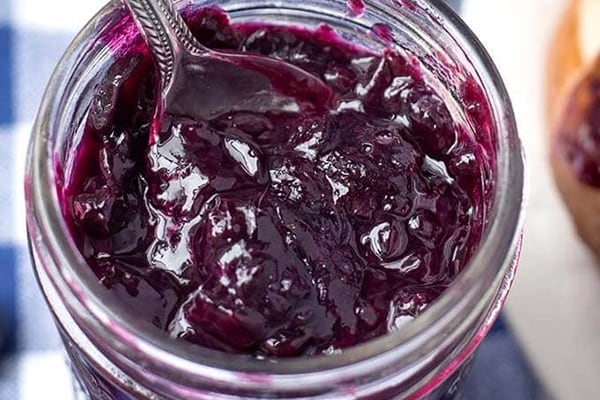
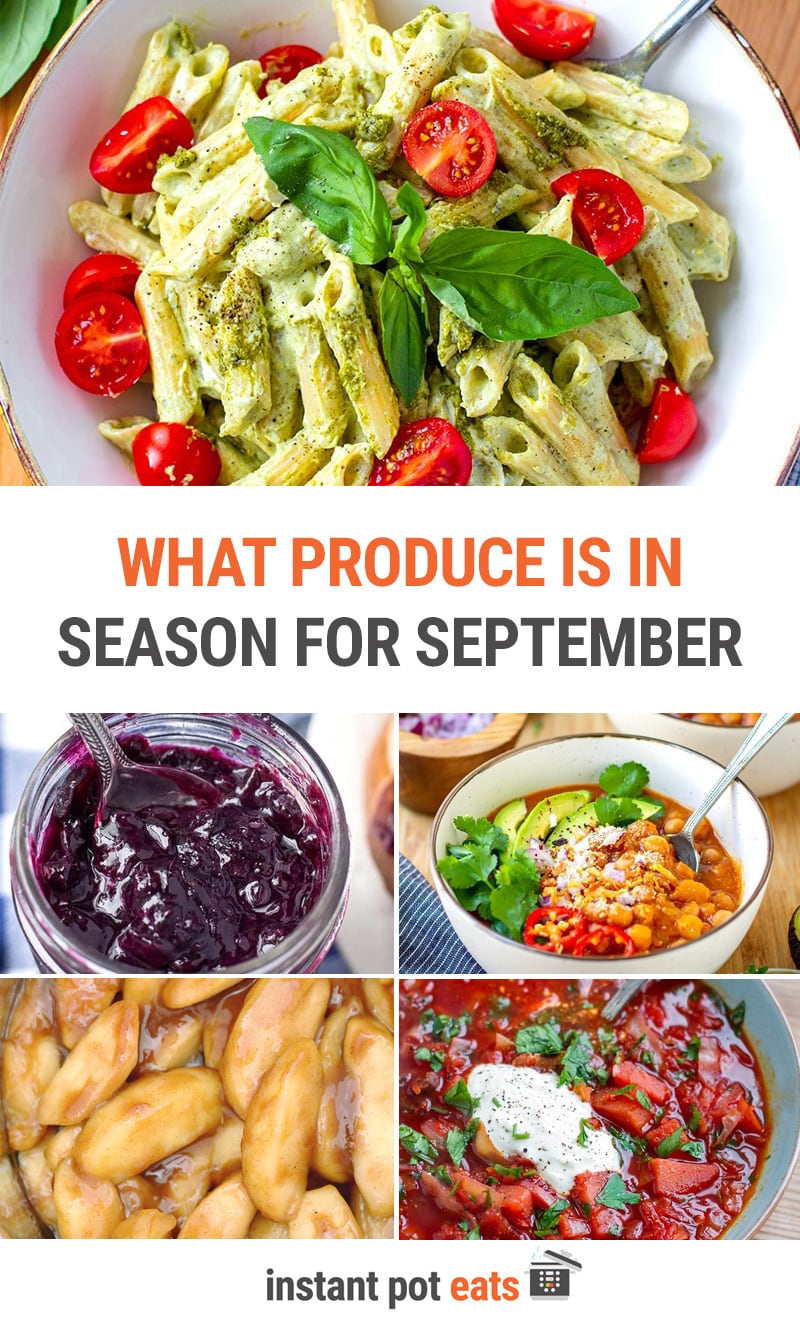
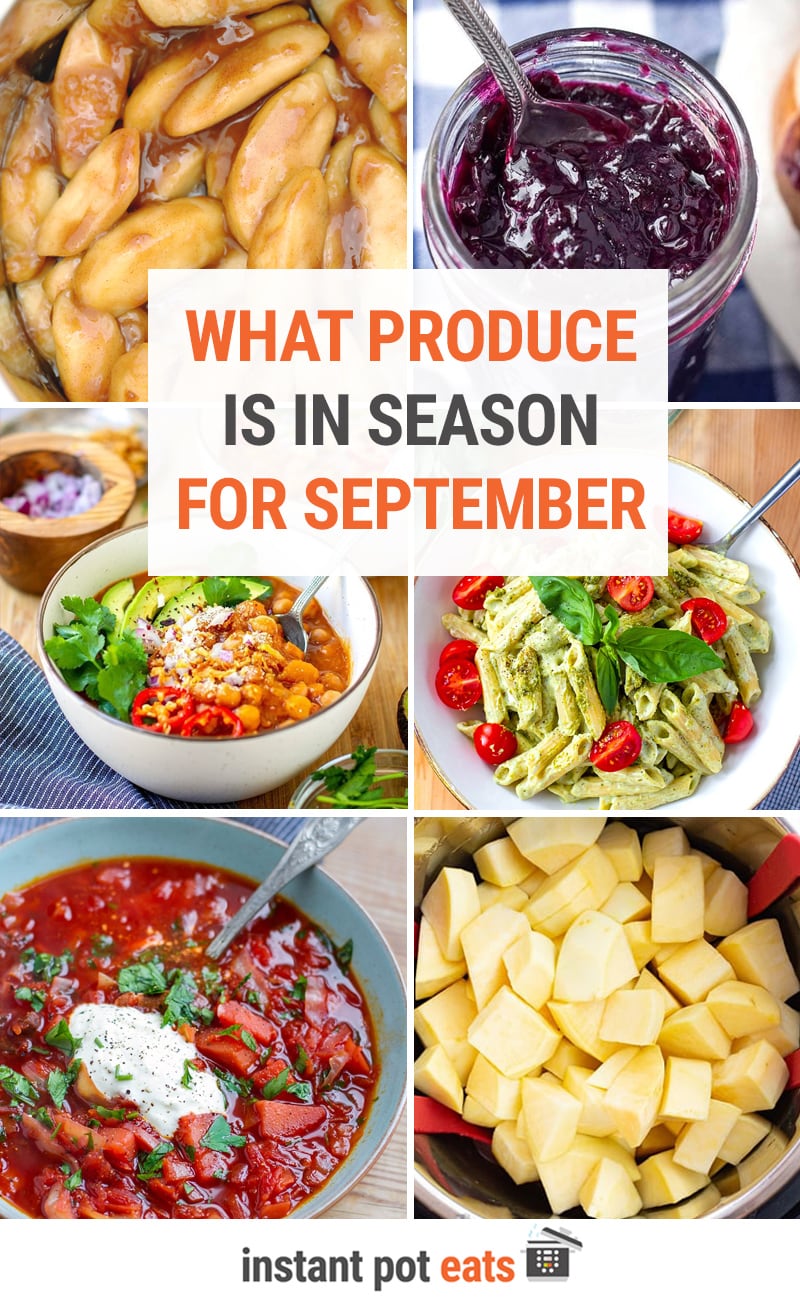


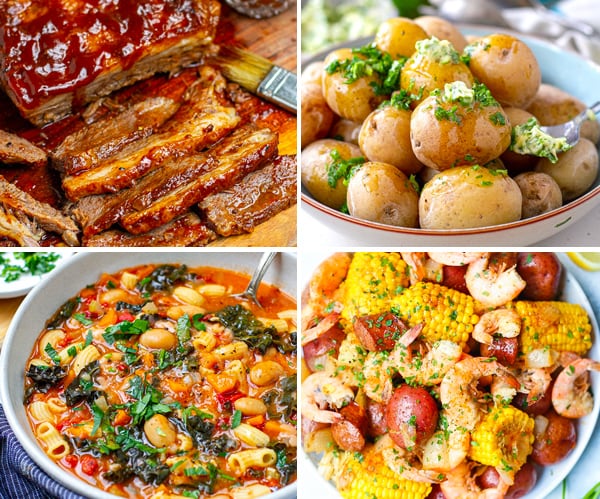

Leave a Reply